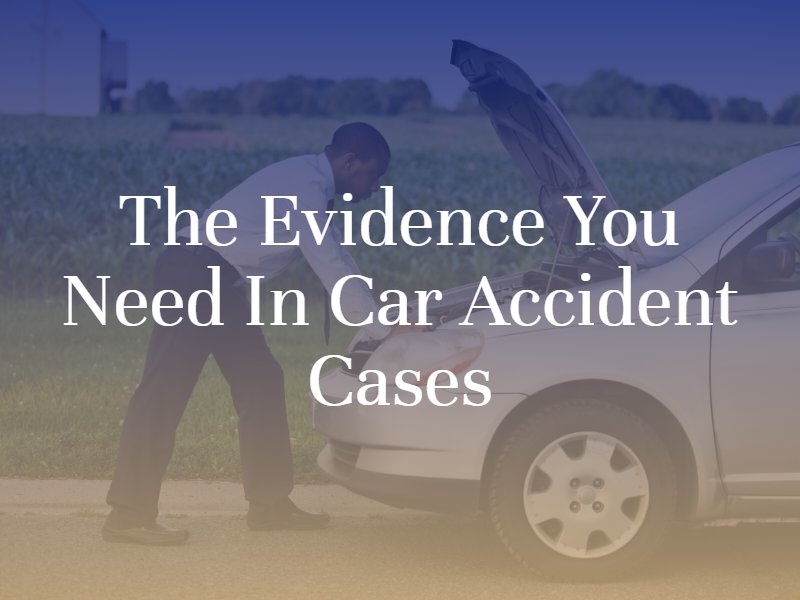
What Evidence Do You Need in a Car Accident Case?
Colburn Law
Posted in Car Accidents,Personal Injury on November 15, 2020

Under Washington law, a driver who causes a car accident is responsible for paying for the damages of their victims. If you recently suffered an injury due to negligent driving, this law may bring you a sense of relief — but you will need to prove that the other driver was responsible for the crash before you can receive these funds.
To prove a car accident case, you will need to collect important pieces of evidence and understand the elements necessary to establish liability. To discuss your claim, speak to a qualified Seattle car accident lawyer today.
How Do You Prove Your Car Accident Injury?
Washington’s fault-based insurance system requires car accident victims to establish negligence in order to collect compensation. Negligence is a legal theory that essentially states the defendant owed a duty of care to the plaintiff and breached that care through a negligent act or omission. To prove negligence in your car accident claim, you will need to prove four important elements.
- The driver owed you a duty of care at the time of the accident.
- The driver breached his or her duty of care.
- The breach of duty directly caused your injuries.
- You suffered damages you can claim compensation for in your lawsuit.
All drivers have a duty to follow traffic laws and operate their vehicles safely. There are multiple pieces of evidence you can use to prove your claim, including medical records, surveillance footage, witness testimony, accident reports, and expert opinions.
For example, say that you are entering an intersection when another vehicle runs through a red light and hits the side of your car. You break your leg and file a claim against the at-fault driver for medical expenses, lost wages, vehicle repairs, and pain and suffering damages.
You can establish a duty of care due to the fact that you were both driving at the time of the accident. You can use traffic camera footage to establish the driver ran the red light along with witness testimony corroborating your story. To prove the cause of your injuries, you can present your medical records to the court and your attorney may consult a medical expert to provide testimony on your behalf. You can use bills, invoices, pay stubs, and impact statements to prove your damages.
What Evidence Do You Need for a Whiplash Claim?
Whiplash is a common car accident injury that causes pain in the upper body, dizziness, difficulty focusing, headaches, and other unpleasant symptoms. Because whiplash is a soft tissue neck injury, doctors cannot detect it using X-rays. As a result, car accident claims involving whiplash come under additional scrutiny.
If you are suffering from whiplash, you can use many pieces of evidence to prove your right to damages. You can save all medical records from your appointments showing your health status and ruling out pre-existing conditions that could cause your pain. Your attorney can also obtain a medical expert witness to testify on your behalf about this condition.
How Much Do Insurance Companies Pay for Pain and Suffering?
In addition to your tangible financial losses, you can collect compensation for the physical and emotional pain and suffering you endured due to the accident. Since you cannot provide an invoice or receipt to quantify pain and suffering damages, it can be difficult to know how to calculate them. Insurance companies use different formulas to determine your pain and suffering value.
Your Seattle personal injury attorney will usually use one of two methods to estimate this portion of your settlement.
- The per diem method, which assigns a dollar amount per day until you reach maximum medical improvement
- The multiplier method, which assigns a number based on the severity of your injuries and multiplies this number by your economic damages
Estimating your settlement can be a challenge, but your Bellevue personal injury lawyer can help. Contact your attorney as soon as possible following your accident to take your first steps toward compensation.



